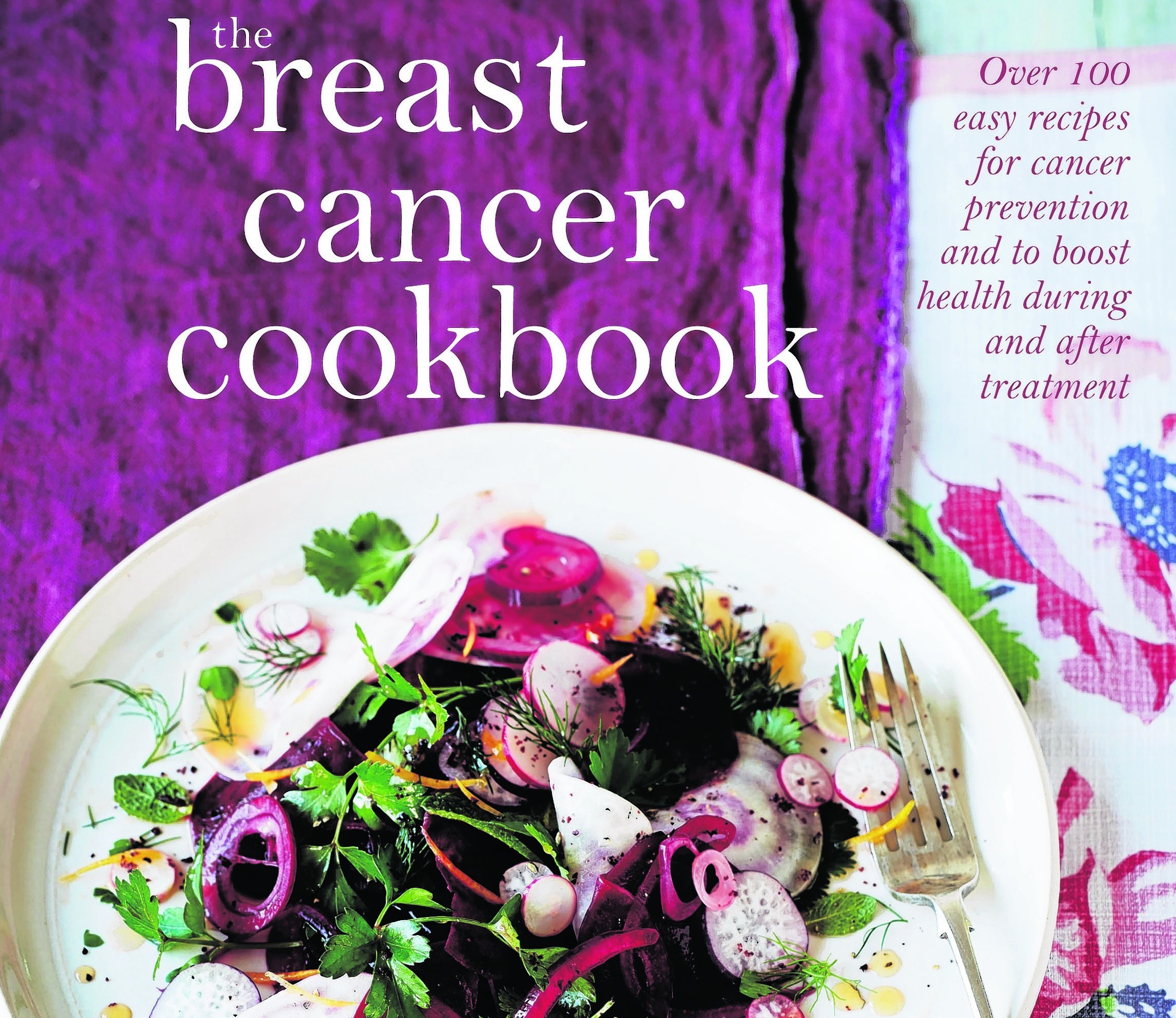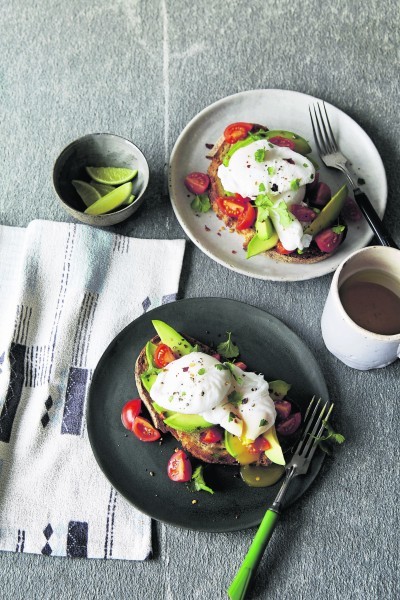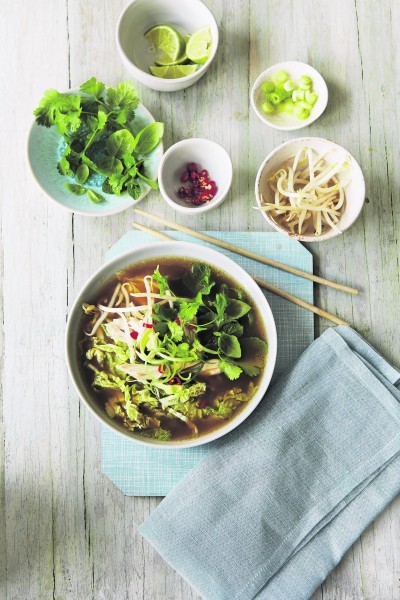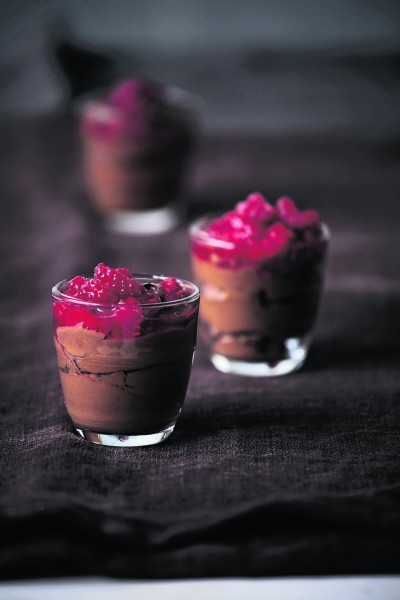It might be one of the less talked about elements of breast cancer, but with treatments often causing side-effects such as exhaustion, reduced appetite, soreness of mouth and an upset stomach, mealtimes can be a minefield.
And all those conflicting reports in the media about which foods might cause cancer and which might prevent it, don’t do much to help.
Sensing the understandable confusion among his patients, Professor Keshtgar, a consultant breast cancer specialist at London’s Royal Free hospital, set to work on The Breast Cancer Cookbook, a collection of scientifically-informed, nutritious and enjoyable recipes, which he promises are “simple, easy to cook and easy to understand”.
“We advise things like cool smoothies and avoiding spicy or sour foods that can irritate ulcers,” adds Keshtgar. “We also advise plenty of fluids during this period of treatment and food with a stronger flavour, so while patients might have issues with the taste sensation, they can still enjoy their food as much as possible.”
The book also clears up some commonly held myths.
“A lot of people stop taking dairy when they’re diagnosed with breast cancer,” says the professor. “We think that’s not right. We don’t think dairy can cause or promote breast cancer.
“Dairy is a very important source of calcium, especially for patients who are undergoing treatment for breast cancer; the tablets given to them can sometimes cause weakness of the bones.”
Generally speaking, he does recommend eating more pulses and soy, whose structure “resembles the structure of oestrogen without any of the hormonal values”, and is thought to help offer a “protective effect” against breast cancer by “preventing cancer cell growth”.
But the recipes aren’t solely aimed at people who’ve been diagnosed with breast cancer; they could be part of anybody’s healthy lifestyle and in that sense, Keshgtar hopes, aid in the prevention of the disease.
On this front, he notes that eating plenty of fibre and keeping fat intake – especially saturated fat – low, is important, as well as “being physically active”.
“The recommendations are quite simple,” says Keshgtar. “What we emphasise is that people should be taking in balanced diets.
“We hope the book will go a long way for patients and give them another resource to refer to,” he adds.
“The effects of diet and lifestyle are long-standing; it just doesn’t happen within days and months. But if one changes the actual habit over a long period of time, it’s another factor that we can at least use in the prevention of development of cancer.”
Here are three recipes from the book to try at home…
MEXICAN EGGS
- SERVES 2
- 4 very fresh medium eggs, refrigerated
- 60g cherry tomatoes, quartered
- 1 avocado, halved, stoned, peeled and sliced
- Juice of 1/2 lime
- 2tbsp coriander leaves, roughly chopped
- A pinch of dried chilli flakes (optional)
- 2 slices of sourdough or other rustic bread
- Freshly ground black pepper
For the poached eggs, fill a non-stick frying pan with a 4cm depth of water and bring to a simmer. Crack the eggs into a small bowl or ramekins and tip them, one at a time, into the water. Allow to simmer gently for three minutes, then carefully remove with a slotted spoon and drain on kitchen paper.
Meanwhile, in a bowl, toss together the cherry tomatoes, avocado, lime juice, most of the coriander and the chilli flakes, if using, and set aside.
Toast the bread and place a slice on each warmed plate. Spoon on the avocado mix, then top with the poached eggs, allowing two per person. Sprinkle with the remaining coriander, a little pepper and an extra touch of chilli, if required.
VIETNAMESE CHICKEN SOUP
- SERVES 4-6
- FOR THE BROTH:
- 2 onions, peeled and halved
- 4cm piece of fresh ginger, peeled and roughly sliced
- 2 cinnamon sticks
- 1tsp black peppercorns
- 3 star anise
- 1 oven-ready medium chicken (about 1.5kg)
- 1 carrot, peeled and roughly chopped
- 2 celery sticks, roughly chopped
- 1.5L good quality, low-salt chicken stock (preferably fresh)
- FOR THE SOUP:
- 1 Chinese cabbage, shredded
- 1tbsp fish sauce
- 2tsp maple syrup
- 6 spring onions, sliced
- 100g beansprouts
- A handful each of mint, coriander and basil leaves
- 1 red chilli, sliced (optional)
- TO SERVE:
- Lime wedges
Preheat the grill to high. Lay the onions and ginger out on a grill tray and grill for four to five minutes, turning occasionally, until tinged with brown.
Transfer the onion and ginger to a large stockpot or flameproof casserole dish (large enough to hold a whole chicken) and add the cinnamon, peppercorns and star anise.
Place the chicken in the pot and tuck the carrot and celery around it. Pour over the stock and top up with enough water to just cover the chicken. Place over a medium heat and bring to the boil.
Turn the heat down slightly and simmer very gently for 50 minutes to one hour, or until the chicken is completely cooked through and tender. Remove the chicken from the pot and set aside to cool slightly. Reduce the stock down by boiling if necessary, until you have 1.2L. Strain.
Peel off and discard the skin from the chicken, then remove the meat from the bone and shred into bite-sized pieces. Return the stock to the heat and add the Chinese cabbage, fish sauce and maple syrup. Simmer for one minute.
Ladle the soup into warm bowls, add a portion of chicken meat to each bowl, then scatter over the spring onions, beansprouts, herbs and chilli, if using. Serve with lime wedges for squeezing.
CHOCOLATE MOUSSE WITH RASPBERRIES
- SERVES 4
- 100g dark chocolate, minimum 70% cocoa solids
- 100ml coconut milk
- 1 very ripe avocado
- 4 pitted Medjool dates, roughly chopped
- 1tsp vanilla extract
- 200g raspberries
Finely chop the chocolate and put into a heatproof bowl with the coconut milk. Place over a pan of just-boiled water, ensuring that the base of the bowl is not in direct contact with the water. Allow the chocolate to melt, stirring occasionally.
Once the chocolate has melted, remove the bowl from the pan and set aside to cool for 10 minutes.
Meanwhile, halve the avocado, remove the stone and scoop the flesh from the skin into a food processor. Add the dates and blend, scraping down the sides occasionally, until smooth and creamy; this should take two to three minutes.
Scrape the melted chocolate mixture into the food processor, add the vanilla extract and blend again for a couple of minutes, until smooth. Divide equally between four serving dishes.
These mousses can be eaten straight away or chilled for a couple of hours before serving. When ready to serve, roughly crush the raspberries in a bowl with the back of a fork. Serve the chocolate mousses topped with the crushed raspberries.
- The Breast Cancer Cookbook by Professor Mohammed Keshtgar is published in hardback by Quadrille, priced £20.




